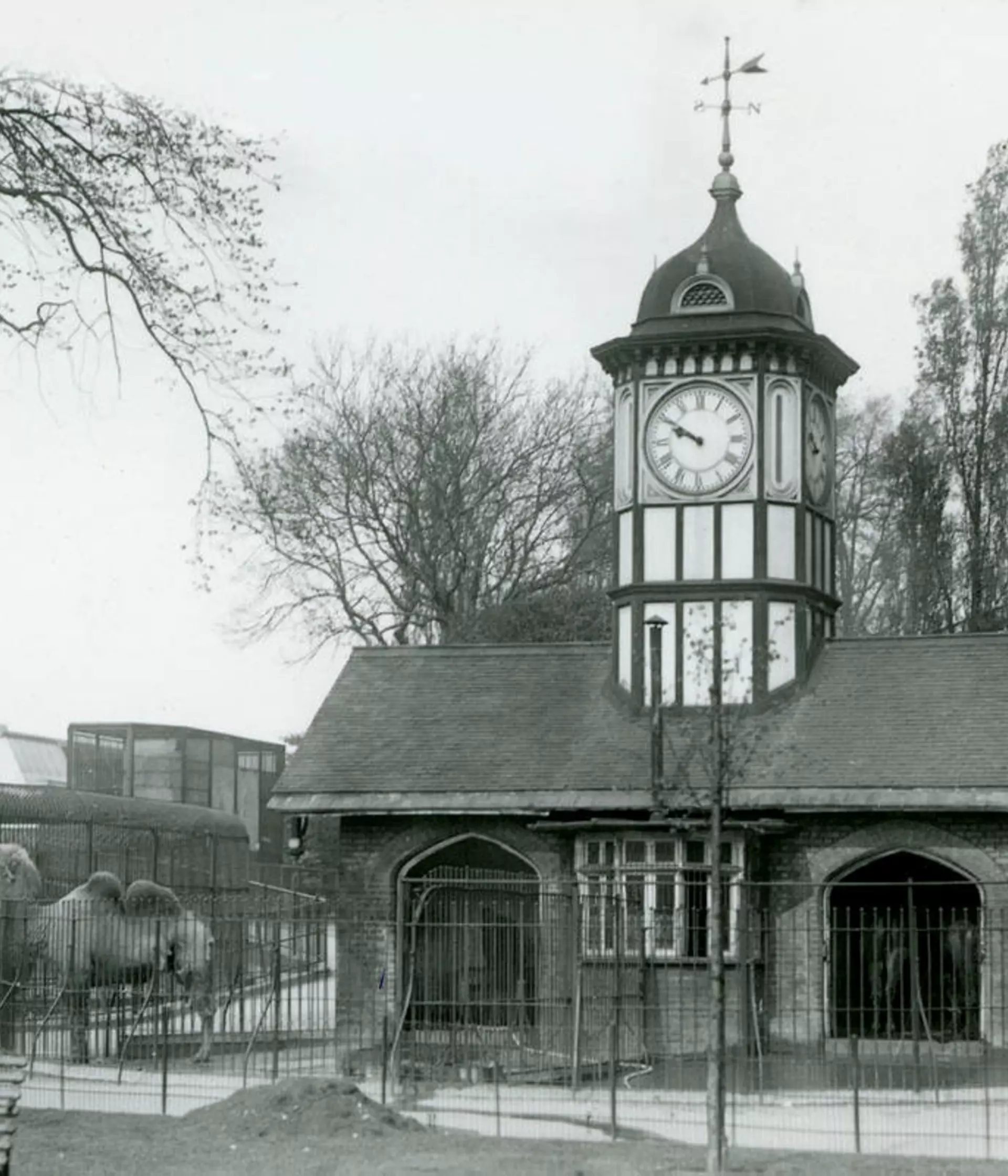Decimus Burton design
Our clock tower is the oldest ‘original’ building at London Zoo – even if it didn’t always look quite the same as it does now!
The present Clock Tower was part of the original Zoo layout designed by architect Decimus Burton, and built between 1827 and 1828. The earliest building on the spot was a Llama House – or as the early records describe it, a “Gothic house for llamas”. This was reported to be “in progress”, along with a bear pit and a boundary wall, in March 1828. We opened to our first visitors (who were all members of ZSL or their invited guests) the following month.
By September 1828, the Mirror reported that two llamas were living in the house, one of which had been donated by the Duke of Bedford, although in later years the building would be occupied by camels. The newspaper also praised the Llama House as “one of the most picturesque objects in the grounds”.
Sure enough, an early lithograph of the building by James Hakewill shows a rather rustic-looking building with a timber front porch, surrounded by greenery and strolling visitors. The bell on the side of the original Llama House was rung to mark closing time at the Zoo.
The new Clock Tower
By 1829, Burton was drawing up plans to add a clock tower to the roof of the building, and this was completed in 1831. That wasn’t the end of the renovations, however. The current timbered-framed clock tower with copper cupola was added in a subsequent rebuild in 1844, and the building was reconstructed in an “improved form” yet again in 1897.
Like other parts of the Zoo, including the rodent house, civet house and zebra house, the Clock Tower was damaged during World War II air raids in the 1940s. Fortunately, most of the Zoo’s resident animals avoided harm. The camels were found sitting placidly chewing the cud after one bomb strike, although a zebra is said to have escaped from the Zoo and been rounded later up in Camden.
The Clock Tower was rebuilt again in 1946-47. It was subsequently used as a chair store in the 1950s, and as a shop in the 1980s.
The Clock Tower now…
While you’ll still find llamas and camels at the Zoo, they’re no longer living at the Clock Tower, and recently the building has been put to more practical use as a first aid post. As you’ll see, it’s also a popular spot with nesting sparrows!
After so many alterations, the current Clock Tower building may not bear much resemblance to the original Llama House – but it remains a continuous link with the early Zoo. You’ll still spot an old closing-time bell on the outside of the building.
